An Ancient Kitchen Tool You Didn’t Know You Needed!
The mortar and pestle has been around since the Stone Age! These two items are used for crushing and grinding ingredients into a fine paste or powder. But what are they exactly?
MORTAR: It’s a small bowl and is typically made of hardwood, metal (including brushed stainless steel), ceramic, granite, marble, or stone.
PESTLE: This is a very small club. It’s used to crush and grind whatever you put into the mortar.
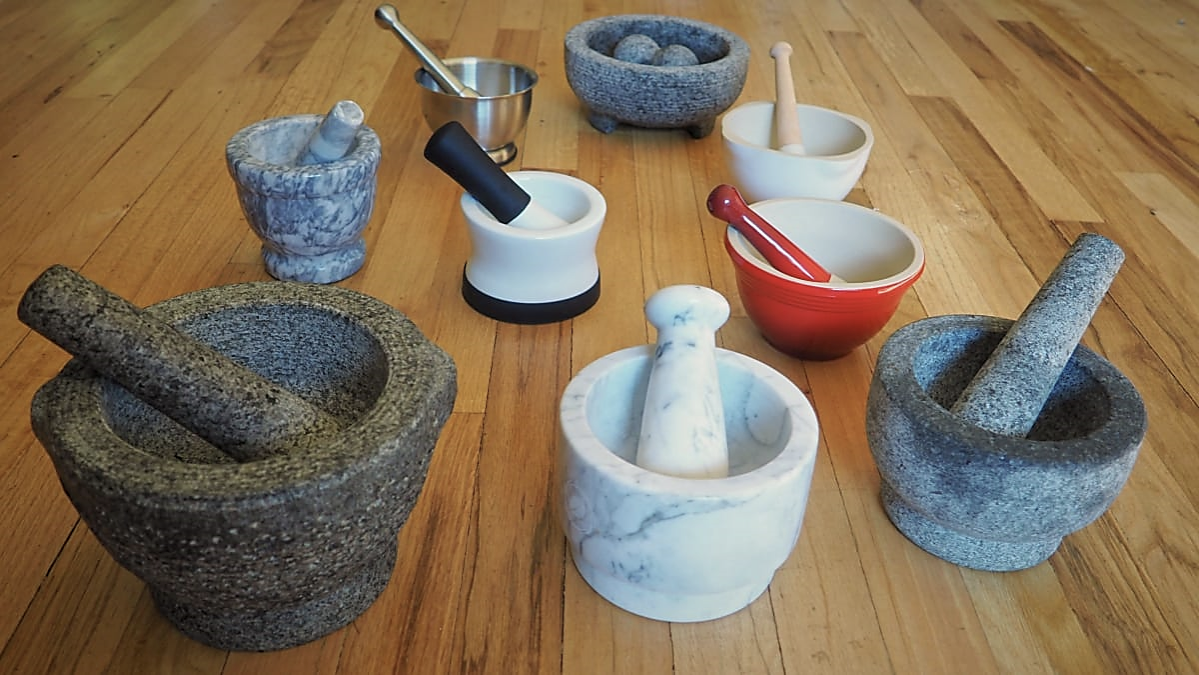
From whipping up a batch of fresh guacamole to crushing garlic, a mortar and pestle are the kitchen tools you never knew you really needed.
In fact, speaking of fresh guacamole, I first saw the mortar and pestle used when we were out to dinner at our favorite Mexican restaurant. Our waiter prepared fresh guacamole at our table using these tools. It was impressive, took next to no time, and the end product was scrumptious.
Maybe you’re wondering why you’d want these tools when a food processor or little grinder can do the same job? Well, basically, it’s about the bashing and mashing motions of the mortar and pestle (MP). They’re far more effective at releasing flavors and aromas of whatever you're grinding.
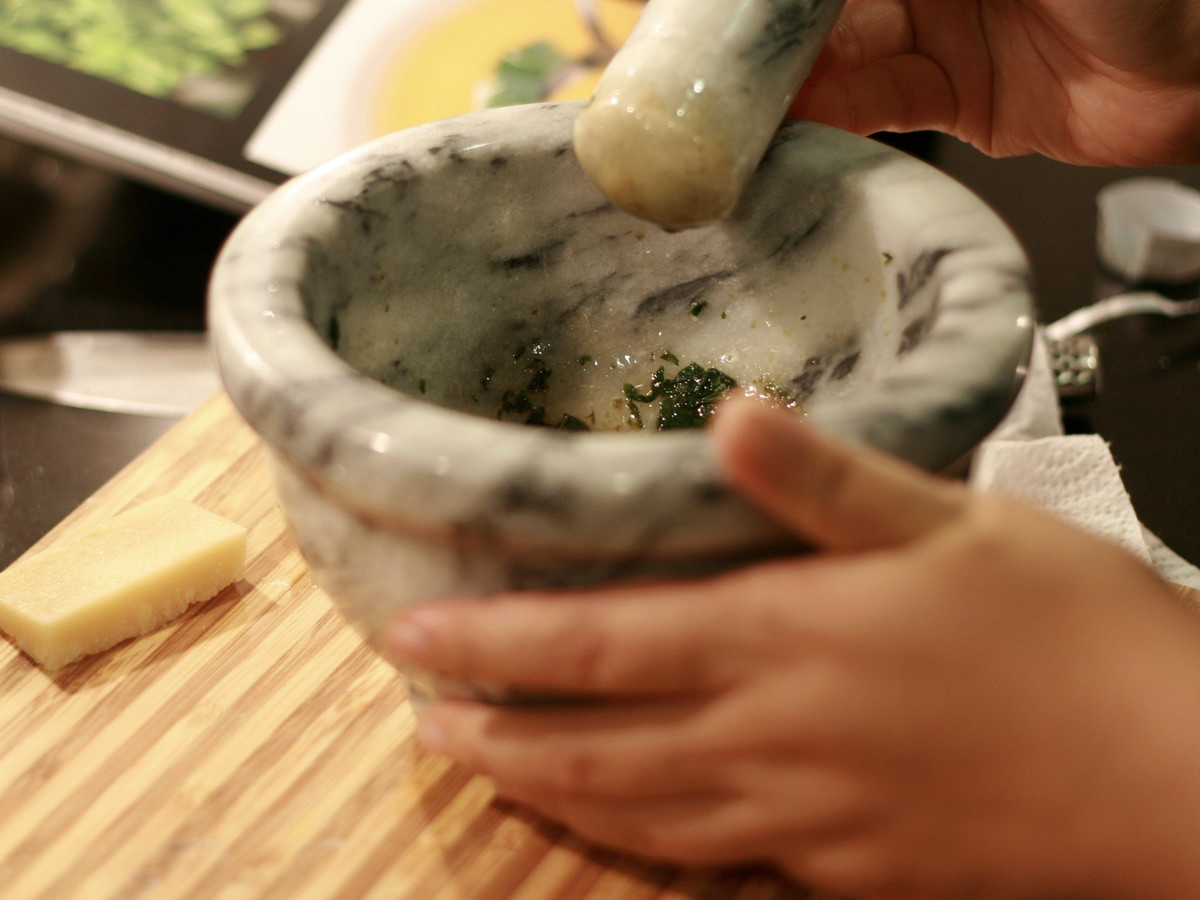
The sciencey reason is simple: A mortar and pestle crushes plants, while grinder or processor blades cut them. If you want to expel all the essential oils of a hunk of garlic or leaf of basil, crushing is the best way to accomplish this.
Other advantages to choosing the MP over a food grinder or processor are obvious. First, it’s electricity-independent, there’s no assembly required, and there’s minimal clean-up. Aren’t we all for that!
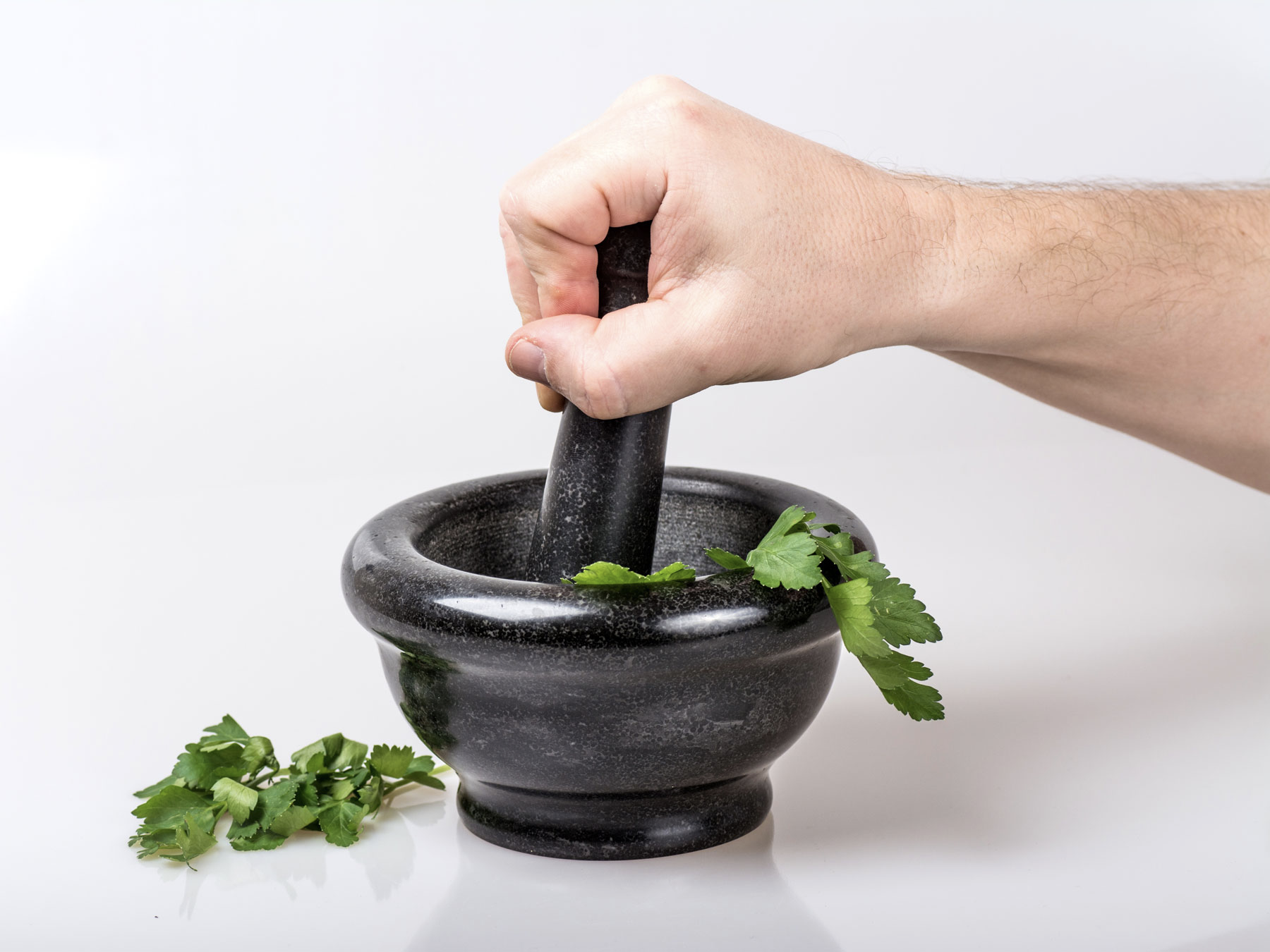
And then there are all the things you can make or do with this handy tool:
Because grinding can be messy, it also comes with a coaster to catch any excess spices, avocado bits, etc. This coaster can also be used as a lid for the mortar bowl. And the pestle has a bamboo grip that provides a steady hold when grinding.
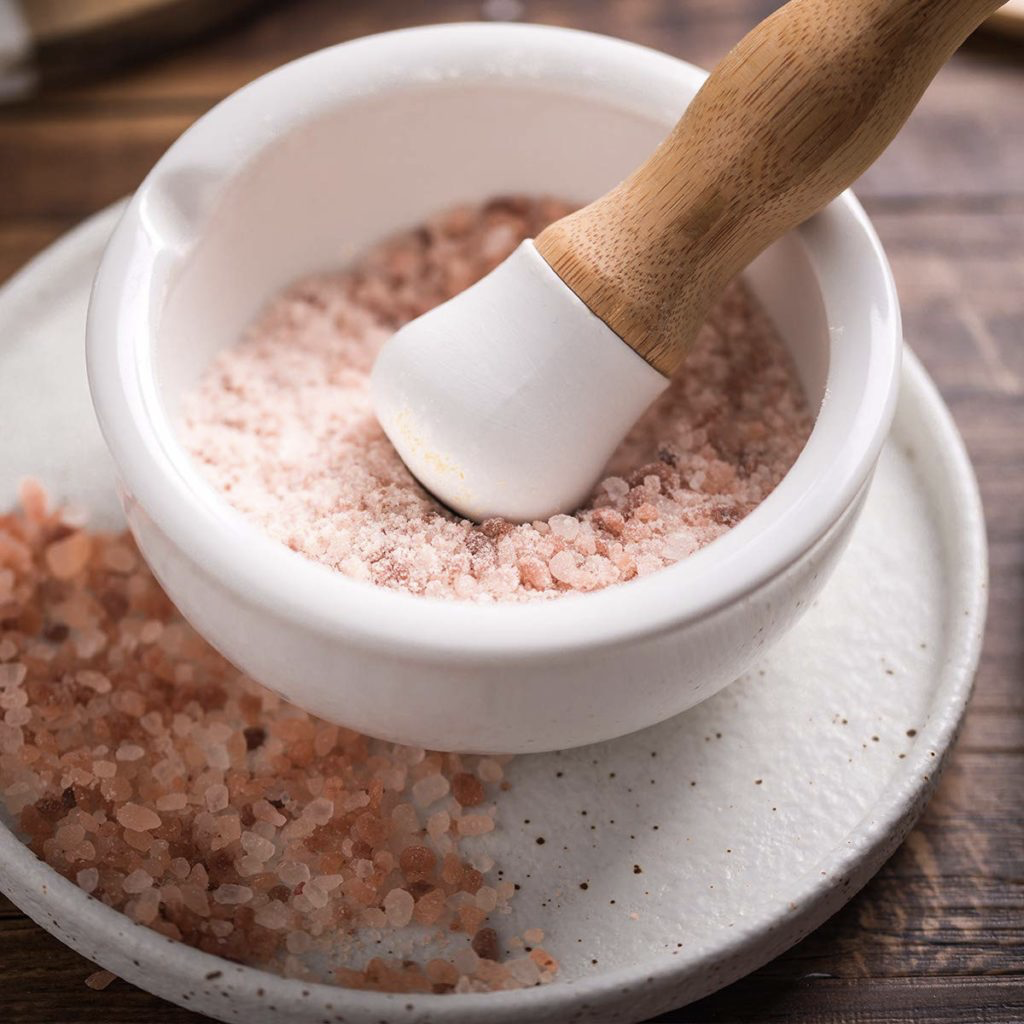
Once you have your new mortar and pestle, be sure to season it (an interchangeable word for “condition,” “cure,” “break-in,” or “prep” ). This process removes any grit or stone dust left behind during the manufacturing process. Follow these steps for a thorough seasoning:
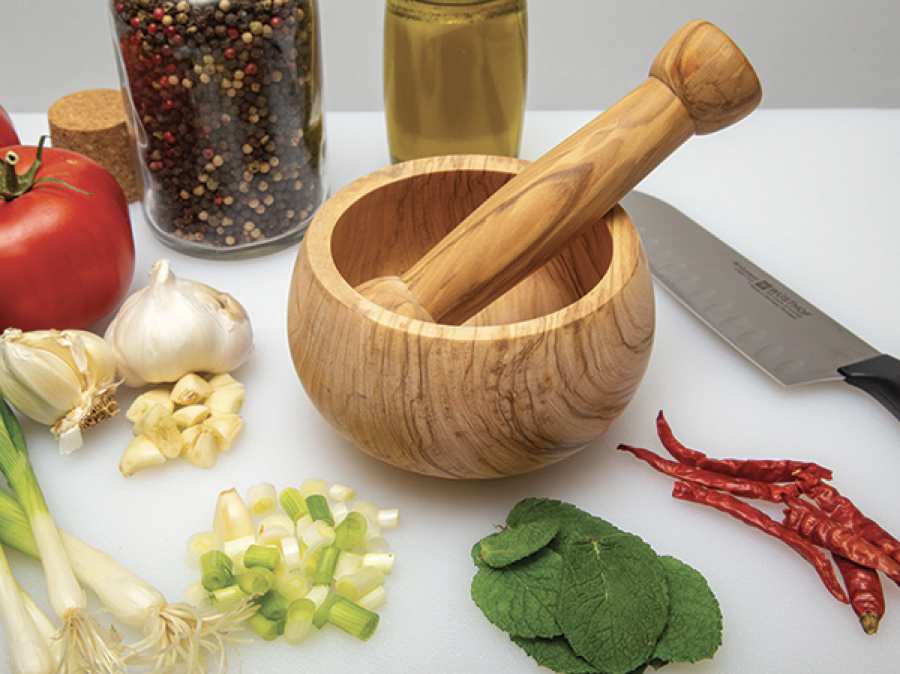
Finally, it’s important to know about the order of operations when grinding a variety of textures. To end up with the consistency you want, first crush your dry ingredients. Then add moist ingredients (garlic, onion, brown sugar, and fresh herbs). Oily or fat-laden ingredients come next (anchovies, nuts, oils, cheese, butter, etc.). Lastly, add wet ingredients (lemon juice, stock, vinegar, honey, soy sauce, and so on).
MORTAR: It’s a small bowl and is typically made of hardwood, metal (including brushed stainless steel), ceramic, granite, marble, or stone.
PESTLE: This is a very small club. It’s used to crush and grind whatever you put into the mortar.

From whipping up a batch of fresh guacamole to crushing garlic, a mortar and pestle are the kitchen tools you never knew you really needed.
In fact, speaking of fresh guacamole, I first saw the mortar and pestle used when we were out to dinner at our favorite Mexican restaurant. Our waiter prepared fresh guacamole at our table using these tools. It was impressive, took next to no time, and the end product was scrumptious.
Maybe you’re wondering why you’d want these tools when a food processor or little grinder can do the same job? Well, basically, it’s about the bashing and mashing motions of the mortar and pestle (MP). They’re far more effective at releasing flavors and aromas of whatever you're grinding.

The sciencey reason is simple: A mortar and pestle crushes plants, while grinder or processor blades cut them. If you want to expel all the essential oils of a hunk of garlic or leaf of basil, crushing is the best way to accomplish this.
Other advantages to choosing the MP over a food grinder or processor are obvious. First, it’s electricity-independent, there’s no assembly required, and there’s minimal clean-up. Aren’t we all for that!

And then there are all the things you can make or do with this handy tool:
- The afore-mentioned guacamole
- Fresh pesto
- Chimichurri sauce
- Thai curry paste
- Fresh salsa
- Hummus
- Aioli
- Salad dressings (especially Caesar dressing; the pestle does a superb job of smoothing out the anchovies and garlic cloves)
- Grind the above-mentioned spices and herbs
- Crush garlic
- Crush and flavor salt
- Crush crackers
- Grind nuts and seeds
- Crush coarse sugar
- Mash berries
Because grinding can be messy, it also comes with a coaster to catch any excess spices, avocado bits, etc. This coaster can also be used as a lid for the mortar bowl. And the pestle has a bamboo grip that provides a steady hold when grinding.

Once you have your new mortar and pestle, be sure to season it (an interchangeable word for “condition,” “cure,” “break-in,” or “prep” ). This process removes any grit or stone dust left behind during the manufacturing process. Follow these steps for a thorough seasoning:
- First, wash in clean water, with a scrubby brush, but without soap. In fact, you should NEVER clean a mortar and pestle with soap. Allow it to completely air dry.
- Next, place a handful of white rice in the mortar. Using the pestle, grind it into a powder. Discard this and repeat this rice-grinding 3 more times.
- On the last grinding, add in a few garlic cloves; mash well and muddle the cloves and rice powder together.
- Add a teaspoon of cumin, salt, and pepper and grind everything together.
- Enjoy the aroma, and discard this mixture.
- Wash the mortar and pestle with clean water, again. Allow it to air dry once more. It’s now ready for service.

Finally, it’s important to know about the order of operations when grinding a variety of textures. To end up with the consistency you want, first crush your dry ingredients. Then add moist ingredients (garlic, onion, brown sugar, and fresh herbs). Oily or fat-laden ingredients come next (anchovies, nuts, oils, cheese, butter, etc.). Lastly, add wet ingredients (lemon juice, stock, vinegar, honey, soy sauce, and so on).
Sources:
www.reviewed.com
www.theatlantic.com
www.cooksinfo.com
www.wideopeneats.com
www.woodworkersjournal.com
 Alice Osborne
Alice Osborne
Weekly Newsletter Contributor since 2006
Email the author! alice@dvo.com
